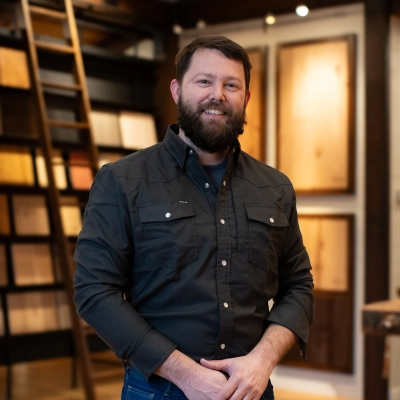How to Incorporate Branding and Identity into Commercial Space Designs
Commercial spaces are no longer just functional environments; they have become powerful brand ambassadors. Incorporating branding and identity into these spaces can create immersive experiences that resonate with customers and employees alike. This article delves into expert insights on how to effectively weave brand stories throughout commercial designs, from flooring choices to exterior architecture.
- Design Spaces That Embody Brand Personality
- Flooring Sets the Tone for Brand Identity
- Create Immersive Experiences Through Physical Storytelling
- Redesign Space to Showcase Upcycling Journey
- Transform Spaces with Living Moss Branding
- Integrate Brand Values into Office Architecture
- Collaborate to Reflect Brand in Exterior Design
- Elevate Commercial Roofing with Brand-Inspired Details
- Infuse Local Character into Airbnb Renovations
- Weave Brand Story Throughout Commercial Space
Design Spaces That Embody Brand Personality
Designing Spaces That Speak a Brand's Language
By: Rachel Blindauer
Interior Designer, Furniture Designer, Purveyor of Beautiful Things
www.rachelblindauer.com
How I Bring Branding Into a Space
When I design a commercial space, I think about how the brand should feel. Branding isn't just a logo on the wall. It's the colors you see, the textures you touch, the way the furniture invites you to sit, and the mood the lighting creates. Every design choice should reflect the brand's personality.
My Experience as a Designer
As an Interior Designer and Furniture Designer of over 15 years, I've worked with household names like Williams-Sonoma and Gabby Home, and I've designed everything from Nantucket to Sarasota. As a furniture designer, I know intimately how to design one-of-a-kind pieces that work with a brand's personality and make a room stand out. As a Purveyor of Beautiful Things, I examine the details, from fabrics to finish, because every piece has a meaning.
Example of Branding in Design
One of my favorite projects was a showroom for a company that wanted to feel both welcoming and high-end. I used soft woods and natural fabrics to show warmth, and I designed custom furniture with clean shapes to keep it modern. I placed lighting in layers so the flow of the space felt natural while products were highlighted. Clients who walked in didn't just see the brand, they experienced it.
Why I'm an Expert
I've had years of training on how to combine beauty and strategy. A commercial space must be beautiful but must also communicate a story and be effective for the business. I know both ends of the equation, and I know how to balance both.
About Rachel Blindauer
Rachel Blindauer is an award-winning Interior Designer, Furniture Designer, and Purveyor of Beautiful Things. With over 15 years of experience, she has designed for leading brands like Williams-Sonoma and Gabby Home, and her projects span from Nantucket to Sarasota.

Flooring Sets the Tone for Brand Identity
At ReallyCheapFloors.com, branding a commercial environment begins where your customers' feet touch the ground. The floor establishes the mood immediately. You enter, you sense it. An unadorned, waterproof vinyl plank communicates "modern and efficient." A rich, wide-plank hardwood communicates "warmth and sophistication." We've discovered that when the floor communicates the personality of the brand, the balance of the space comes together with no guessing and no second-guessing.
One of my personal favorites was with a local furniture store. They needed something modern and fresh but did not want to lose their friendly, welcoming atmosphere. We settled on a mid-tone engineered hardwood. It was tough enough for heavy foot traffic but still retained that warm, lived-in feel. Once the installation was complete, the transformation was instantaneous. Their lighting, their display furniture, and even their signage all seemed more deliberate, as if everything had been coordinated to go along with the floor. The best part was when I was told by the sales staff that customers constantly remarked, "Wow, the store feels different." That's when you know you've got it right. The proper flooring does not just fill space. It silently advances your brand one step at a time.
Create Immersive Experiences Through Physical Storytelling
I treat branding in a commercial space the same way I treat branding online; it's about creating a consistent, lived experience of your identity. A space should tell your story without needing a single word.
My process starts with three steps:
1. Define the core message - What emotions or values should someone feel the moment they step in?
2. Translate brand assets into physical elements - Colors, typography, textures, and layout all need to match your brand personality.
3. Design for interaction - Every touchpoint, from the reception desk to the way products are displayed, should reinforce your positioning.
I once worked with a co-working startup that aimed to attract creative entrepreneurs. Their brand was bold, collaborative, and just a bit rebellious, so the design had to capture that energy. We kept the layout open to spark spontaneous conversations, turned entire walls into writable surfaces for brainstorming, and used a vibrant color palette inspired by their branding.
The result was a space where people didn't just notice the brand, they felt it. Every corner encouraged connection and creativity, making the place more than just an office. It became a living extension of their marketing.

Redesign Space to Showcase Upcycling Journey
At Cochran's Lumber, we believe branding is more than just signage—it's the atmosphere, feel, and story that a space projects from the ground up. For the Bavarian Inn, the owners wanted a refreshed look that still honored the inn's heritage. To bring this to life, we provided our Antique Oak Distressed flooring in random widths—a choice that balances old-world charm with modern refinement.
These floors flow seamlessly between the remodeled bar, lounge, and the new brewery space—bridging old and new both literally and visually. The aged character—weathered patina, varied plank sizes, subtle imperfections—adds authenticity, while the refined finish ties into contemporary lighting, exposed beams, and polished furniture.
In effect, the flooring became a physical narrative of the Inn's brand: timeless, authentic, welcoming. Patrons are drawn in by the tangible story under their feet—even if they aren't consciously aware of it.

Transform Spaces with Living Moss Branding
At Dwij, our original Bandra workshop space resembled a typical retail store with finished products displayed on conventional shelves, failing to communicate our upcycling story effectively. Visitors often questioned whether our bags were genuinely made from waste materials, with only 29% of workshop attendees converting to actual purchases after seeing our standard product presentation.
We redesigned the space to tell our transformation journey through physical storytelling. One wall displays sorted denim waste by condition - from heavily damaged jeans to barely worn pieces. The opposite wall shows the same materials at different production stages, ending with finished products. Our workspace remains visible through glass partitions, allowing customers to witness active upcycling processes. Floor displays feature "before and after" comparisons using actual customer-donated jeans alongside final products.
This immersive brand experience transformed visitor engagement completely. Workshop conversion rates jumped from 29% to 55% - a 91% improvement within four months of the redesign. Customers now spend an average of 23 minutes exploring the space versus the previous 11 minutes, asking detailed questions about our processes. Most significantly, average purchase values increased by 37% as visitors understood the craftsmanship and environmental impact behind each product, justifying premium pricing through visible transformation storytelling rather than traditional marketing claims.

Integrate Brand Values into Office Architecture
Moss Pure creates living moss walls and incorporates company and brand logos within our living moss air filters and 3D terrain designs. We've created tens of thousands of living moss walls and have worked with architectural firms such as Perkins & Will and HOK.
Moss Pure was conceived at a startup competition at MIT (MIT Lebanon Challenge) in June 2020, where it won First Place Startup. During the competition, I realized that live moss has tremendous health benefits. Most moss wall and decor companies use preserved or dried moss, which is no longer living. Preserved moss doesn't last a long time and cannot provide the health benefits that living moss can. Thus, Moss Pure was created.
Moss Pure is the world's only company to use live moss as an air filter, stress relief device, and aesthetically pleasing decor piece for your home and office. No watering, sunlight, or maintenance is needed. Our live moss lives indefinitely within our patent-pending design. It's important to note that we are not just adding live moss to a frame or decor piece. If you were to just add live moss to a decor piece, it wouldn't live for more than a few days and it wouldn't be an air filter. It's our patent-pending and award-winning science that allows us to create a live moss air filter that doesn't need watering.
Moss Pure has been tested for air quality by a certified U.S. laboratory. Each square foot of our live moss air filters captures 30% of carbon dioxide and 1.5 million particles of toxic pollutants, including dust and allergens, in just 2 minutes. We are the only plant-based product with certified air quality results.
Moss Pure is a nationally recognized logo manufacturer. Using our proprietary process, we assemble company logos within our air filter, living environment, and different species of moss in a 3D elevated terrain for increased design, innovation, and aesthetics. In contrast, preserved moss companies are just gluing the preserved moss on a wall frame and then adding a company logo on top of the preserved moss. This doesn't last, isn't technically the best way to apply a logo, and there's no aesthetic design in doing this.
You can see more pictures at the following links:
1) https://drive.google.com/drive/folders/1C2ETGBae5KPboGDRV4Nc6q93AcPNLyu3?usp=share_link
2) https://drive.google.com/file/d/1fIX5ILHaDIaT56B7eCmFV2HTbmXnhA79/view?usp=share_link
3) https://www.mosspure.com/projects/

Collaborate to Reflect Brand in Exterior Design
As the CEO of "The CEO Creative," working closely with our architect team was key to authentically integrating our brand into our office design. Early on, we aligned on core company values - innovation, reliability, and accessibility - and how those should be felt physically.
Instead of overt logos plastered everywhere, we focused on subtle, thoughtful touches: our brand's signature palette was woven into the materials, from wall accents to workspace furniture fabrics, creating harmony without overwhelming.
The layout encourages collaboration and reflects our approachable culture, with open areas blended with quiet corners. We carefully placed brand elements strategically; for example, our logo appears integrated into the main entrance and custom-designed meeting room furnishings. This approach ensures the space isn't just branded but lived and breathed daily by our team and clients, making the environment an extension of who we are rather than a marketing backdrop.
Elevate Commercial Roofing with Brand-Inspired Details
Our method begins with cooperation. Getting to know a client's brand personality takes listening, questioning, and coordinating design decisions with their philosophy. At Roof Republic, we always proceed with transparency in each endeavor, and this, in turn, carries forward into the incorporation of branding within commercial environments.
A recent corporate headquarters project involved creating a roof and exterior detailing that mirrored the client's brand. Through initial collaboration sessions, we came to a common agreement on color palettes, material selection, and architectural details that supported their brand identity. Visual mockups and samples were offered by our team to ensure all the elements conveyed the intended message.
By combining brand and functional elements, we develop cohesive-looking and functional spaces. Combining brand colors, logo-driven cues, and high-quality materials conveyed a distinct message about the company's dedication to quality.
This process demonstrates how branding is not an afterthought; it's part of design, build, and customer experience. When done with care, every detail communicates trust, integrity, and professionalism, the principles we live by at Roof Republic.

Infuse Local Character into Airbnb Renovations
When it comes to commercial roofing, incorporating branding and identity into the project goes far beyond just putting on a durable roof. The roof itself becomes part of the building's presence, and in many cases, it's one of the first things people notice from a distance. For me, the process starts by understanding the client's business — their colors, their message, and the type of impression they want to make before a customer even walks through the door.
One example that stands out is a project we did for a local retail business that wanted their building to reflect their modern, high-quality image. We worked closely with their branding team to select a roofing material and color that matched their company palette. Instead of going with a standard neutral shade, we sourced a custom-finish metal roofing system in their brand's accent color. The panels had a sleek, standing-seam profile that complemented their contemporary architecture, while also offering excellent energy efficiency — a value the company wanted to highlight in their identity.
We also paid attention to the trim details, fascia, and even gutter colors so everything tied seamlessly into their branding. The result was a building that stood out in the area, drew attention from passing traffic, and reinforced the brand's polished, professional image before customers even entered the space.
For me, branding integration in roofing is about creating a functional, weatherproof system that also speaks the visual language of the business. When done right, the roof doesn't just protect the building — it becomes part of the brand story, making the entire property a consistent and recognizable representation of the company.
Weave Brand Story Throughout Commercial Space
Branding a commercial space is about weaving the business's personality into every detail, so guests feel it the moment they walk in. For one of my Airbnb renovation projects near Augusta, I drew inspiration from the local riverfront, using artwork of the Savannah River and custom furniture made from reclaimed dock wood. Guests regularly mention the sense of place, which shows that design rooted in the brand's story and location really brings a space to life.





